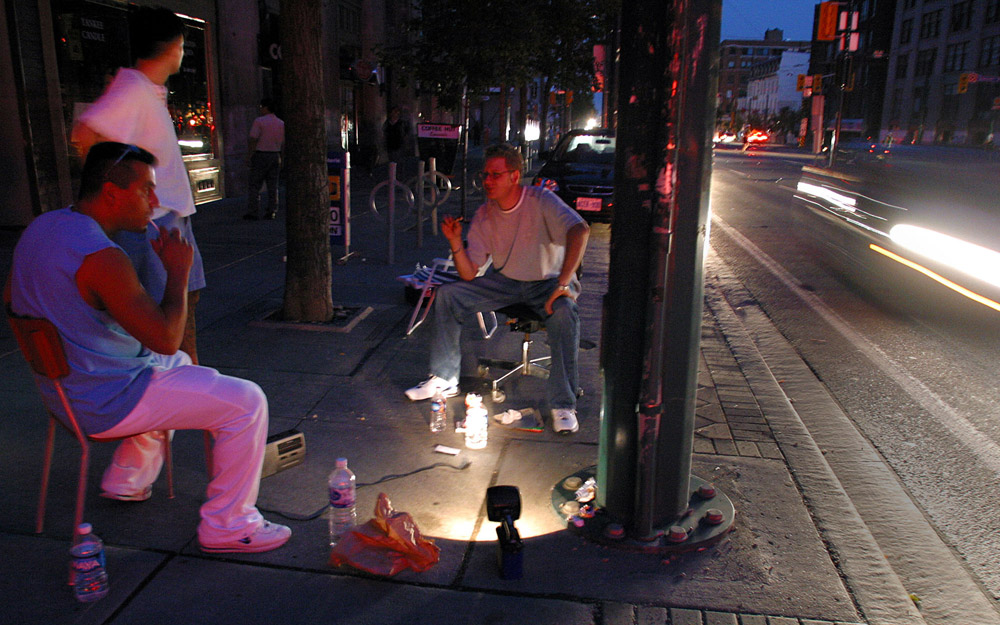TORONTO – It was 4:11 p.m. on Thursday, Aug. 14, 2003 when a massive power outage struck a large portion of North America, including the eastern U.S. and Ontario.

It began when a tree branch touched a power line in Ohio and spread like wildfire affecting more than 50 million people.
LET US KNOW: Where were you when Toronto was hit with the blackout? What were you doing?
The 2003 blackout was the worst in North American history and experts say the electrical system is still vulnerable a decade later.
Ontario Energy Minister Bob Chiarelli says the blackout tested the system at the time, and that Ontario’s aging electrical system was very weak.
READ MORE: 10 years after blackout, North American power grid still vulnerable to failure
Gerry Cauley of the North American Electric Reliability Corporation, says there are now mandatory industry standards across the continent and fines of up to one million dollars a day to prevent a similar blackout.
Chiarelli says one of NE-R-C’s highest priorities now is cyber security and severe weather events and doesn’t think there is 100 per cent comfort in the system yet in those areas.
Kim Warren of Ontario’s Independent Electricity System Operator, says the grid’s susceptibility to these threats grew in the years following the blackout.
An executive at Hydro One said the possibility of a similar event occurring today is low but unpredictable human error could lead to problems across the grid again.
READ MORE: Toronto power supply vulnerable, 2007 report warned
Former Toronto mayor Mel Lastman says he was surprised when American politicians initially blamed the blackout on Canadians, added it was a day when Ontario banded together with no spike in crime reported.
Here’s how some Canadians remember that day:
Mel Lastman, then Toronto mayor.
“I was with my wife, I took the day off and … we went out for a bite and they couldn’t reach me, but in the restaurant they had no electricity.
The guy couldn’t take cash and he wouldn’t take a credit card because the cash register wouldn’t work and the credit card machine wasn’t working and so he said ‘it’s on the house’ to everybody.
Then we came home and I get a call and they said ‘you’ve got to come here right away’, and I said ‘where’s here?’, (and they said) the command centre.
Ernie Eves, then Ontario premier.
“I was in Caledon … for my riding association meeting. I had just gotten to the house and the power went out. And with all due respect, a cut to power in Caledon, that isn’t too unusual.
Then I was talking to Isabel, my spouse, who was supposed to be on her way up and she said the power was out all over.
I immediately got on the phone and away we went. The next thing I knew I was being whisked downtown in an OPP helicopter from the OPP station in Caledon East, and we landed at Jarvis Collegiate (in Toronto) and set up a command centre immediately.”
John Baird, then Ontario energy minister.
“I was in Leamington, Ont. and I just happened to be at someone’s home who had a backup generator. Then we turned on the TV … and it showed that the blackout was including Michigan as well – so I realized there was something that was far obviously bigger than just Ontario.
It was problematic because all of the Hydro One helicopters obviously had to be used on the electricity problem. I got a chartered plane to take me back to Toronto but then they couldn’t get the garage door open at the small airport in Leamington because the electricity was out, so I ended up having to drive back to Toronto.
We were just about running out of gas so we pulled in at an OPP station (in London, Ont.) I went in, told them who I was and they sent a police officer to drive me to Toronto to the emergency command centre.”
Peter Carayiannis, lawyer who directed traffic in downtown Toronto for hours.
“What I first saw when I came down to the intersection was the massive traffic … … people were coming out of buildings, the TTC was emptying and traffic was at a dead standstill.
A city employee gave me a safety vest and a bicycle courier gave me a whistle so all of a sudden I walked into the intersection and I saw traffic, and five minutes later I had a whistle and a jacket.
I got into the intersection and wasn’t really quite sure what to do, but I started guiding traffic a little bit and I found that people were following my lead and we started getting the intersection moving. I was there for about four and a half hours.”
With files from David Shum



Comments